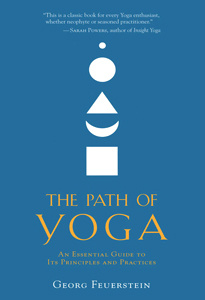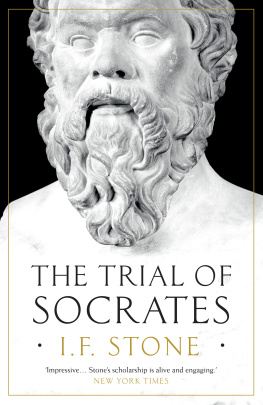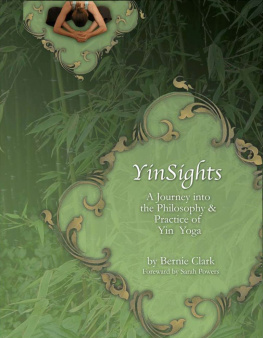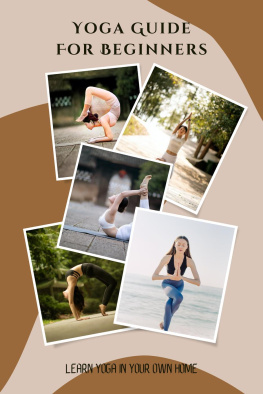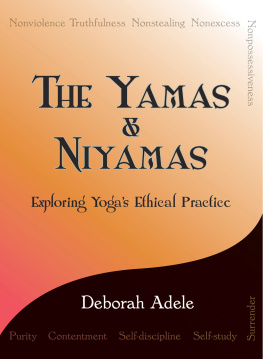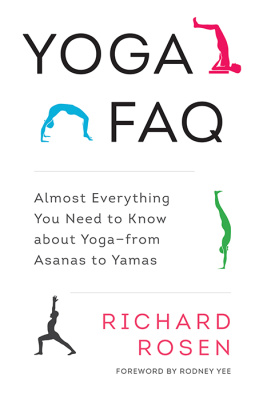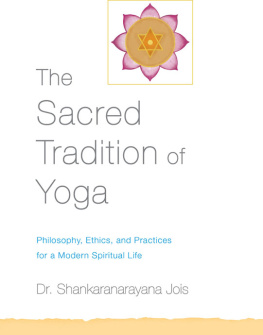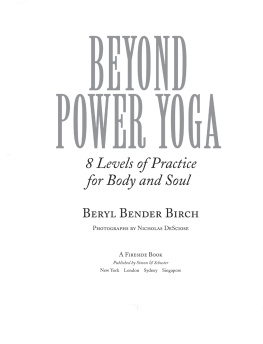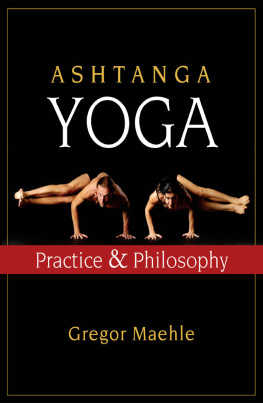Intense, poetic, wise, practical, intimate, and visionarythe mind-body connection has never been better explored or explained.
Sharon Gannon, cofounder of Jivamukti Yoga
Michael Stone manages to seamlessly integrate traditional teachings with contemporary advances in the fieldand so adds new dimensions of meaning to both.
Richard Rosen, author of The Yoga of Breath
Michael Stone brilliantly reveals the profound underpinnings of yoga that are rarely taught or understood.
Richard Freeman
The Inner Tradition of Yoga has much to guide and inspire anyone on the road to insight.
Chip Hartranft, author of The Yoga-Stra of Patajali
Michael Stone details a practical and pragmatic psychology of yoga that can provide all practitioners a way to engage with the deepest transformative possibilities that yoga can offer. It is certainly what we need now.
Frank Jude Boccio, author of Mindfulness Yoga
Few people on the planet have Michaels gift to explore and explain in contemporary language the profound wisdom of yoga. Highly recommended for teachers and students.
Larry Payne, PhD, coauthor, Yoga for Dummies and Yoga Rx
ABOUT THE BOOK
There is more to the tradition of yoga than toning and strengthening. At the root, there is a vast and intriguing philosophy that teaches the ethics of nonviolence, patience, honesty, and respect. Michael Stone provides an in-depth explanation of ancient Indian yogic philosophy along with teachings on how to bring our understanding of yoga theory to deeper levels through our practice on the matand through our relationships with others.
MICHAEL STONE is a teacher of yoga and Buddhist meditation (in the vipassana tradition) and a psychotherapist in private practice. He is the founder and director of the Centre of Gravity Sangha, a community of yoga and Buddhist practitioners based in Toronto, where he lives. He is also the author of The Inner Tradition of Yoga and Yoga for a World Out of Balance. For more information visit www.centreofgravity.org.
Sign up to learn more about our books and receive special offers from Shambhala Publications.

Or visit us online to sign up at shambhala.com/eshambhala.
THE INNER TRADITION OF YOGA
A GUIDE TO YOGA PHILOSOPHY FOR THE CONTEMPORARY PRACTITIONER
Michael Stone

SHAMBHALA
BOSTON & LONDON
2011
Shambhala Publications, Inc.
Horticultural Hall
300 Massachusetts Avenue
Boston, Massachusetts 02115
www.shambhala.com
2008 by Michael Stone
Cover calligraphy by Barbara Bash
Cover design by Judy Arisman
Quotation from Jorge Luis Borges Selected Poems 19231967 by Jorge Luis Borges, copyright 1968, 1970, 1971, 1972 by Jorge Luis Borges, Emece Editores, S.S. and Norman Thomas Di Giovanni. Used by permission of Dell Publishing, a division of Random House, Inc.
The cover calligraphy OM is in Siddham script.
All rights reserved. No part of this book may be reproduced in any form or by any means, electronic or mechanical, including photocopying, recording, or by any information storage and retrieval system, without permission in writing from the publisher.
Library of Congress Cataloging-in-Publication Data
Stone, Michael.
The inner tradition of yoga: a guide to yoga philosophy for the contemporary practitioner / Michael Stone.
p. cm.
Includes bibliographical references and index.
eISBN 978-0-8348-2443-0
ISBN 978-1-59030-569-0 (pbk.: alk. paper)
1. Yoga. I. Title.
B132.Y6S764 2008
181.45dc22
2007048880
For Michelle and Arlyn
I do not know just what it is that I am like. I wander about concealed and wrapped in thought.
Rig-Veda
FOR YOGA, these are the best of times, yet in some ways, these are the worst of times. The explosion in information technology is bringing people and their cultures, ideas, languages, religions, and businesses together at an exciting and disconcerting pace. So far, no one culture, no one religion, no one government is able to define an absolute frame of reference to organize the whole thing.
Spreading almost like mushrooms with the eclectic world culture of multinationals, Internet cafes, and Starbucks is the practice of yoga. There is something naturally appealing about the yoga postures to all types of people. Approaching reality through the immediate physicality of the body, the senses, and the breath skips right around religious, cultural, and national prejudice, and brings out a love of the best and most beautiful in everything. This draws people to yoga so that there are enthusiastic, sincere, and educated yoga practitioners in even remote corners of Asia, the Middle East, Europe, and all of the Americas. Yoga has something remarkably universal about it. It is practically generic in its mysticism, which in its initial appeal to such a wide audience does not cast an oppressive net of a single belief, framework, or god-concept over the open and indeterminate process of living intelligence. There is still an innocence and naivety to the openness and enthusiasm shown worldwide for yoga. Can we keep the innocence as we become wise enough to see with love through the wily ways of our own egos? Or will that innocence be exploited by all of the profiteering, proselytizing, seducing, and reducing done by our egos to avoid true yoga? Can our yoga survive the remarkable rate of its own expansion? Will the potent and ancient tradition live through its commercial success? These remain open questions for yoga enthusiasts on both the personal and the collective levels.
It is completely understandable why there is such a strong tendency to take the active ingredient out of yoga, to package it to please and to sell, to avoid the very heart of yoga and, thereby, to avoid reality. Genuine yoga exposes the insubstantiality and emptiness of our self-image, which allows us to see the insubstantiality and emptiness of everything. Eventually remarkable courage, commitment, and compassion arise from yoga practice and, through those, a wonderful insight and joy. Yoga is far nicer than anything we could have wanted or bargained for. We simply have not been able to wrap our minds around it, and so before investigating it on its own terms, we are selling it unopened and untasted in the spiritual marketplace. The traditional context for yoga, awakening to the simple truth of impermanence, to universal death, is all that has been missing. This is what awakens our compassion and shows us the interconnectedness not only of all beings, but of techniques, styles, and viewpoints. It sobers the mind and wakes us up from spiritual pride and materialism.
Yoga has always been, and continues to be, subtle and impossible to express literally. Like love, it is taught with metaphor and poetry, with patterned practice and ecstatic release. Occasionally, and always in bad taste, the ego can trick us into imagining that our own specialized forms and languages have achieved universal status, when in fact they remain painfully provincial and riddled with blind spots. At any time, any yoga practitioner can grasp their practice form and language as literal and miss out on what is much more intelligent and pleasing. As humans with egos we can and frequently do mess up even the subtle and beautiful. Now our yoga is hitting the fan of the modern world. The variety of viewpoints, of techniques and styles, the attitudes and philosophies form a colorful array of trends mixed from the best and worst of modern cultures from all around the world. On one hand, there are new extreme styles of raunchy party yoga, cult narcissism, condescending asceticism. This adoration of the ego is forming a path of competition and vanity. On the other hand, with so much information and cross-cultural linking, there are breathtaking new ways and languages for teaching and ever more refined forms of an art of a yoga worthy of passing on to others.
Next page
